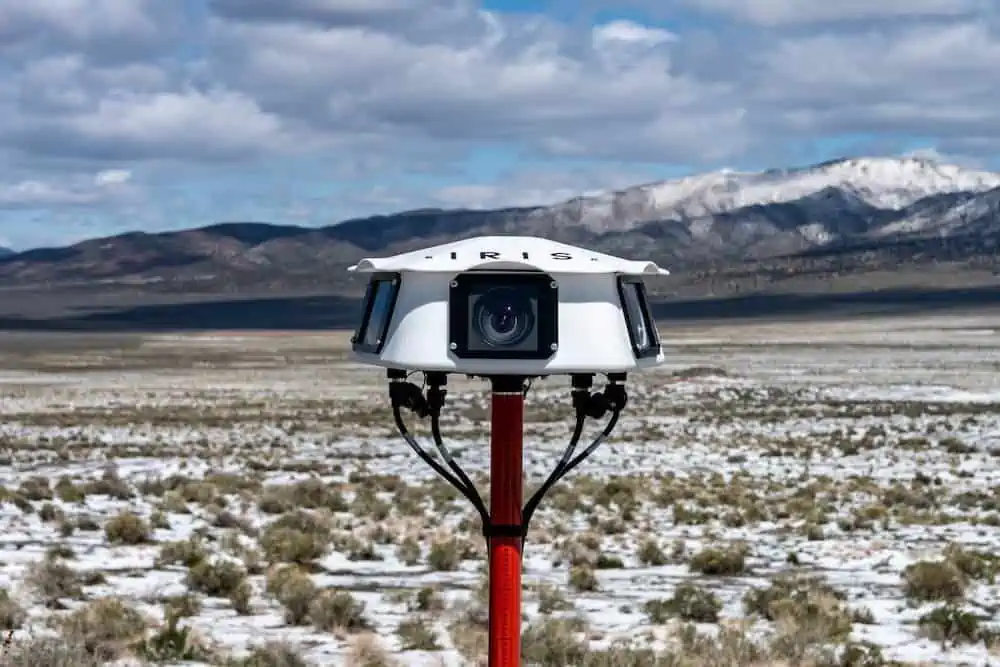
Addressing the need for large-scale, safe uncrewed aviation, Iris Automation has announced the commercial availability of Casia G, a ground-based version of the company’s Detect and Avoid (DAA) surveillance solution.
Using the same patented Artificial Intelligence (AI) and computer vision technology as Iris Automation’s onboard solutions, Casia G provides a full optical, 360° degree field of regard designed to detect, alert and enable operators to avoid both co-operative and non-cooperative aircraft for safe Beyond Visual Line Of Sight (BVLOS) flight, which has previously been challenging for uncrewed systems due to right of way concerns, specifically the inability for uncrewed aircraft to successfully see and avoid other aircraft.
Casia G creates a perimeter of sanitized, monitored airspace for Unmanned Aerial Vehicles (UAVs) to perform work safely, without additional payload. It is designed for operations in fixed or temporary locations, supporting drone in the box operations and augmenting or replacing human visual observers.
“A human has sufficient visual acuity to see airborne traffic only within a +/-5 degree field of view around our focal point – we have to scan the sky, and are frankly not very good at it,” said Jon Damush, CEO, Iris Automation. “Casia G sees the entire sky, with uniform probability and resolution, 10 times per second – without distractions or breaks. This is a solution for airspace awareness that covers a large majority of small UAS use cases, but at a price point that is economically viable and without complex integration.”
Casia G provides an operator with airspace awareness:
- At a price point that allows operators to fix their costs and enjoy lower per-flight costs as operations scale.
- Operating multiple, dissimilar types of aircraft within the coverage area, since no direct aircraft integration is required.
- Without requiring difficult or expensive integrations with aircraft systems.
- Without consuming valuable size, weight and power (SWaP) from the aircraft.
- Without requiring approvals from agencies other than the FAA.
Casia G can be expanded by adding additional units in a mesh to create a network of detection nodes for large-area air risk mitigation. The system then provides a single feed of cooperative and non-cooperative air traffic, available to an operator’s UTM system. This provides a path to approvals for both larger area and one-to-many operations by enabling a holistic view of the airspace.
Casia G has already obtained a BVLOS waiver on behalf of the City of Reno, and Iris Automation is in the process of proving additional deployment patterns and concepts of operation with the FAA.
“The Casia portfolio of products is a force multiplier for safety,” said Jason Hardy-Smith, VP of Product, Iris Automation. “Whether enabling autonomous flight or adding an additional layer of safety for piloted flight, it’s an extra level of surveillance. Casia G offers an extremely scalable ground-based solution for times where onboard isn’t an option or a fixed location needs to be surveyed, creating a safety zone ideal for a wide range of surveillance use cases.”
Iris Automation has collaborated with Kongsberg GeoSpatial, TruWeather and Whitefox Defense for the Casia G:
Integrating Kongsberg Geospatial’s advanced situational awareness display tailored for the Casia G sensor will provide display of non-cooperative aircraft detection and alert UAS operators to intrusion into the Casia G area of surveillance. The Casia G display can provide a single user interface for a correlated airspace picture.
Integration with TruWeather’s micro weather climate technology enables accurate weather conditions as part of flight planning and real time monitoring during flights.
For customers operating drones remotely in and around sensitive infrastructure, situational awareness for both air risk and security require the ability to detect both non-cooperative drones and crewed aircraft. Combining solutions like Whitefox Defense’s DroneFox anti-drone system with Casia G increases airspace situational awareness and enables immediate mitigation to be taken when necessary.


















